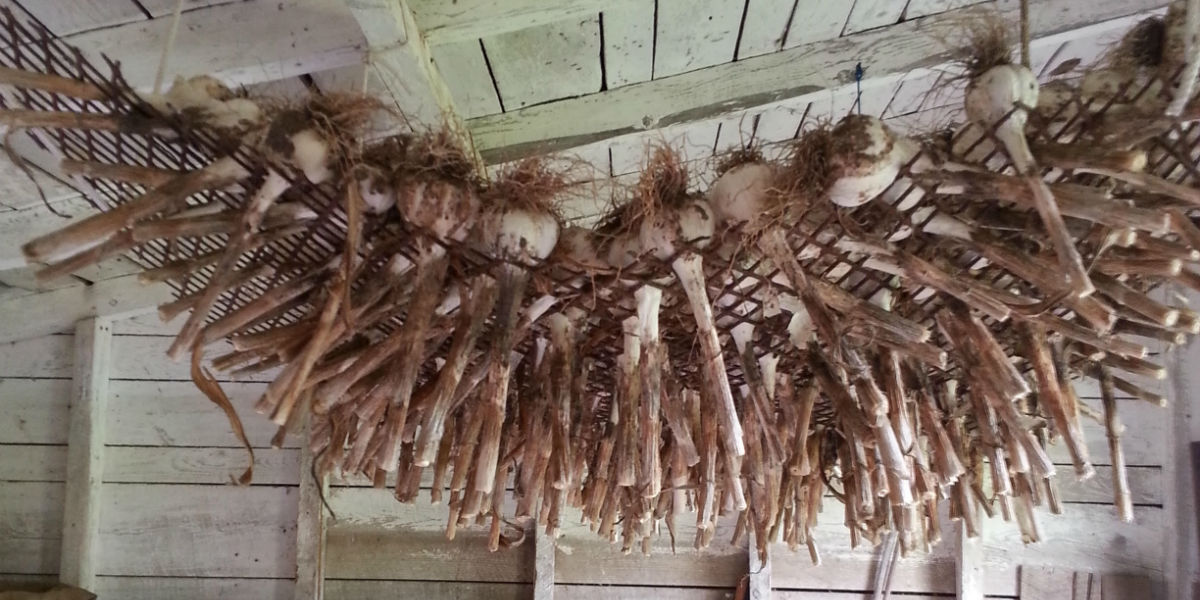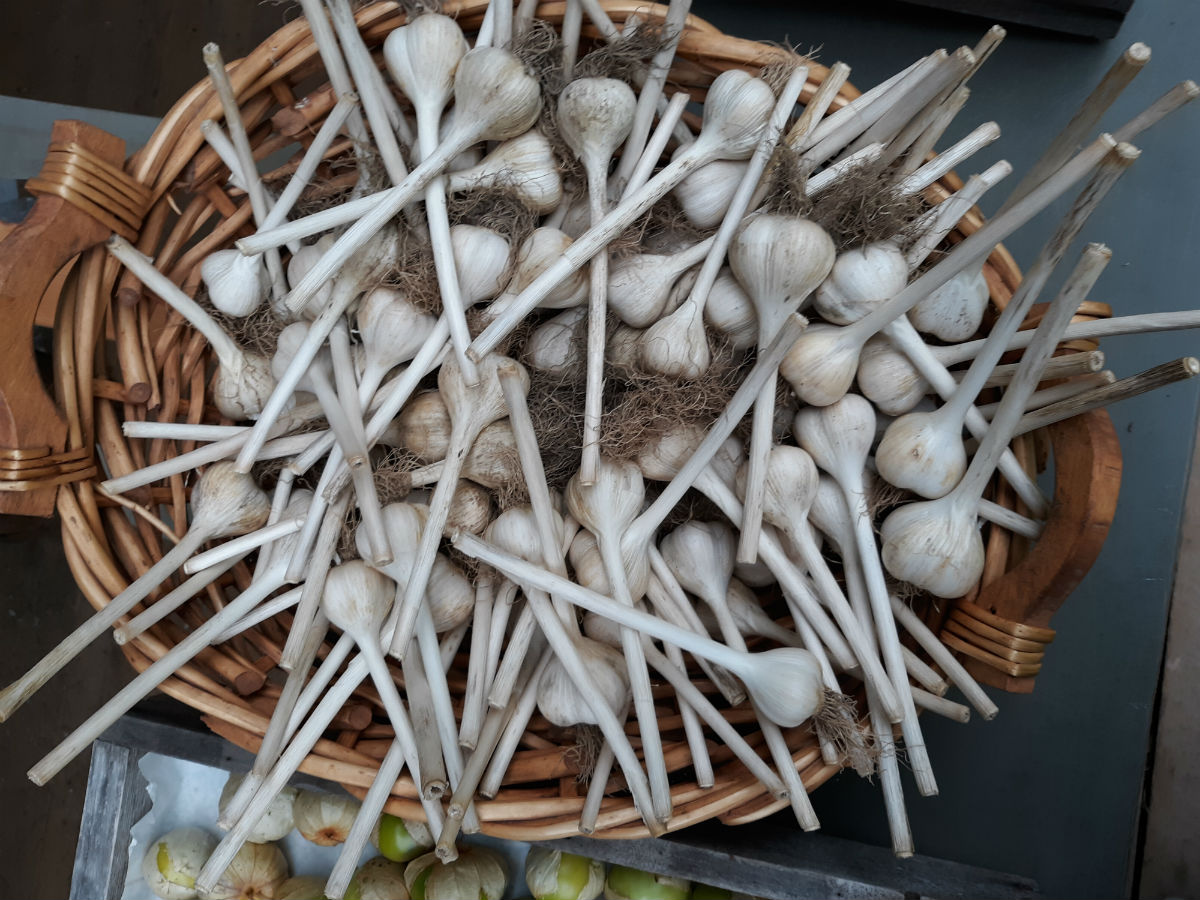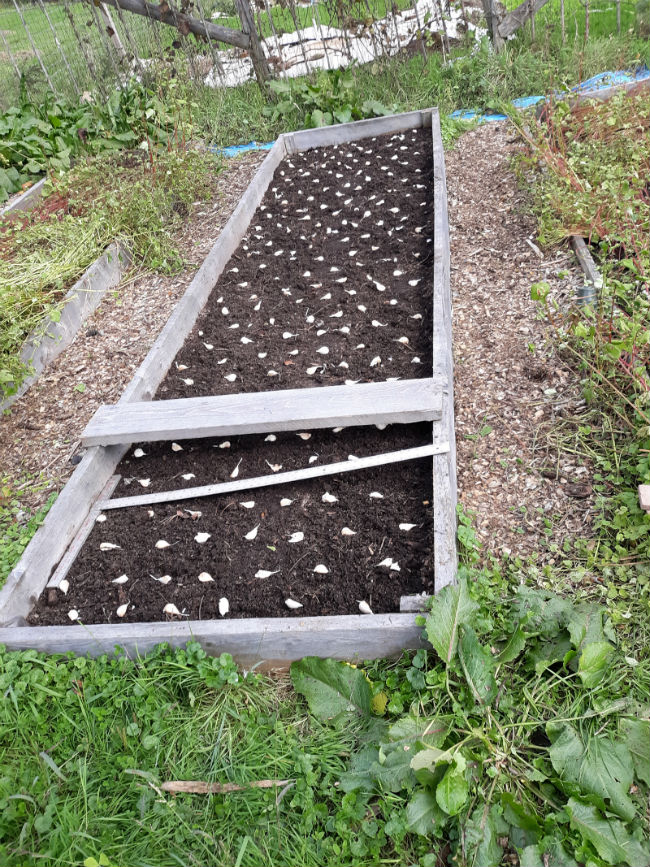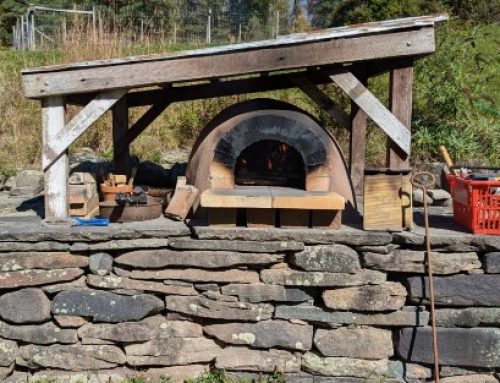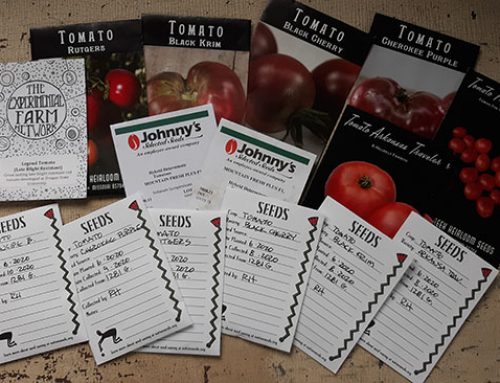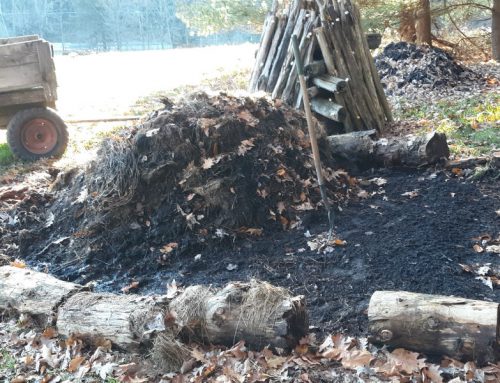Garlic, Allium sativum, is a member of the onion family that includes shallots, scallions, leeks, chives and, of course, onions.
Next year’s garlic crop will be cloned from what I harvested this past July. Each bulb of my garlic contains four to six plump cloves. Thus, to sow slightly more than 1,000 garlic plants, I took several hundred bulbs, also referred to as knobs or heads, breaking them apart into individual cloves. Only the larger, healthier cloves are replanted to ensure these qualities in next year’s harvest.
I’ve been growing a variety of garlic called German Hardneck, also called German White, for ten years now. Each year, I am told, it learns to adopt to my climate and growing conditions in Damascus, Pennsylvania. This is called “biological elasticity,” the ability to acclimate to local conditions over time.
On October 12th, a first frost warning was announced for my area. I am in USDA Plant Hardiness Zone 5b. This is the time to plant. This garlic, often with “extra-hardy” tagged onto its name, will establish itself in these colder fall days sending roots into the ground and soon, a small green shoot poking up. Timing is important to allow the garlic to establish itself before the temperatures sink too low but not too early, to prevent premature top growth.
Garlic is one of the oldest cultivated crops dating back some 5,000 years. It originated in Central Asia and still grows wild in a number of the “stans:” Kyrgyzstan, Tajikistan, Turkmenistan and Uzbekistan. Today, garlic is a culinary staple of so many cultures around the world providing a pungent flavor when raw and turning mild when cooked. It was not part of my family’s culinary tradition but now, on a daily basis, I am in my kitchen adding garlic to soups, pestos, salad dressings, pasta and grain salads.
Many are devoted to garlic for its many medicinal properties derived primarily from its sulfur compounds. There are a long list of professed benefits including boosting the immune system, preventing the common cold, lowering cholesterol and preventing heart disease. My daily consumption of garlic aids in my preference to avoid doctors and hospitals.
I harvest my garlic at the end of July and allow it to cure in my old chicken coop, well ventilated due to missing windows & doors, atop frames of chicken wire. German Hardneck will store well for six months, even longer. Although past its prime, I continue to use until the following spring and by then the scapes — the flower stalks — emerge. These scapes can be harvested for that same pungent garlic flavor.
If you buy your garlic in the supermarket, chances are it is a softneck variety that came from China. It is a poor substitute once you have grown accustomed to good quality hardneck garlic, home-grown or from the farmer’s market.
My first year on the farm, I planted several varieties in addition to the German Hardneck, purchased at the nearby Callicoon Farmer’s Market. They produced smaller bulbs and smaller cloves. And there were other problems. So the German became my exclusive garlic crop. Other farmers in northeast Pennsylvania agree that this is the best, most reliable variety for our area.
My garlic has flourished due in part to raised beds, especially important this past year, one of the wettest on record. Fusarium bulb rot is a major problem in poorly drained soils. This weekend, I prepared the garlic plots by adding four five-gallon buckets of compost as a top dressing. Each plot measures sixteen feet by four or 64 square feet. The cloves were spaced six inches apart and sunk root-end down (pointy end up) under an inch of soil. I then spread a layer of leaf mulch over the top for insulation, to prevent frost heaving. Come early spring, they will emerge quickly and I will add more mulch to help the soil retain moisture and prevent competition from weeds.
I will also do my soil tests in early spring to see what needs to be added. Garlic is considered a heavy feeder, needing an adequate supply of basic nutrients and a soil pH approaching neutral. Previous tests of my soil revealed low levels of sulfur and boron, two often neglected elements that could be important to add in the spring.
Mid-October 2018. Garlic cloves ready for planting.
I am not a commercial farmer. But I do sell some of my crops to defray costs and prevent good produce from ending up on the compost heap. My garlic is the most popular thing I grow. Customers return to my farm to ask for more and sing its praises. My garlic scapes, except for some I consume, are harvested by Channery Hill Farm to produce its delicious garlic scape relish. It is my first sale of the year.
Last night, I cut down a healthy cilantro plant in my garden, chopped it up and threw it in a food processor with toasted pine nuts, three cloves of garlic, extra virgin olive oil and a pinch of salt. After processing, I added grated parmesan cheese. Pesto doesn’t get better than this.

